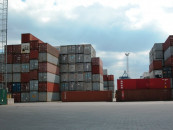Remittances plummet to five-month low in July
SBP reports 19% dip, plunging to $2.03b compared to previous year’s $2.51b

Significant setback as the inflow of workers’ remittances from overseas Pakistanis through official channels dropped to a five-month low of $2 billion in July. This decline has raised concerns about Pakistan’s ability to sustain import payments and manage maturing foreign debt obligations. The State Bank of Pakistan (SBP) reported a 19% decrease in remittances, with the figure plunging to $2.03 billion in July, compared to the previous year’s $2.51 billion for the same period.
Additionally, the inflows were 7% lower than June 2023’s figure of $2.18 billion. This notable decline in remittances could potentially reverse the favourable current account balance achieved over the last four consecutive months, tipping it into deficit in July. Such a shift could trigger a series of challenges, including the need to curtail imports to around $4 billion per month.
This, in turn, might jeopardise the import-led economic growth, hinder the accumulation of foreign exchange reserves, and intensify the nation’s dependence on foreign debt. This precarious situation might also exert pressure on the rupee against the US dollar in both interbank and open markets. In discussions with The Express Tribune, the head of the remittances department at a leading bank pointed out that the availability of better foreign currency rates in the unofficial hawala-hundi market encouraged a portion of non-resident Pakistanis to opt for this unregulated channel to transfer funds to their families back home, as opposed to using official channels like banks and authorised exchange companies.
He highlighted that the decline in remittances was more pronounced from Middle Eastern countries, particularly Saudi Arabia and the United Arab Emirates (UAE), as opposed to Western countries including the US, UK, and various European nations. Explaining this disparity, he noted that Western nations tend to comply more rigorously with currency market regulations compared to Middle Eastern countries, where illicit currency market practices have been widespread. The expert further explained that domestic economic distortions, such as the need to control imports due to limited foreign exchange reserves and central bank interventions aimed at artificially stabilising the rupeedollar exchange rate, have inadvertently bolstered the illicit hawala-hundi market.
Reports indicate that illicit operators are paying a premium of Rs5-7 more to purchase each US dollar from overseas Pakistanis, and are charging local importers an additional Rs15-20 to settle foreign payments. While global inflation rates could be a contributing factor, leading expatriates to spend more abroad and remit less back home, the expert argued that inflation rates were higher in Western nations. This explains the relatively better remittance inflows from Western countries compared to the Middle East, where inflation hasn’t been a significant concern recently. Data from the SBP revealed a 16% drop in the inflow of workers’ remittances from Saudi Arabia, with the figure sliding to $487 million in July from $577 million during the same period last year.
Remittances from the UAE witnessed a steeper decline of 31%, reaching $315 million for July, compared to $456 million in the corresponding month of the previous year. Similarly, receipts from the UK decreased by 25% to $306 million, down from $409 million, while remittances from European countries dipped by 4%, amounting to $284 million compared to the previous year’s $294 million. Remittances from the US experienced a 4% drop as well, falling to $238 million from $248 million. Furthermore, remittances from other countries saw a substantial 25% decrease, settling at $398 million for July, compared to $527 million during the same month last year.
Dr Khaqan Najeeb, a former consultant at the Ministry of Finance, highlighted that the International Monetary Fund (IMF) projected workers’ remittances to total $32.9 billion for the entirety of fiscal year 2024, averaging $2.7 billion per month. However, July’s remittance figures fall significantly short of this projection, raising concerns about Pakistan’s ability to manage its twin trade and current account deficits using remittances as a major source of financing. Despite these challenges, the banking expert projected that remittances would likely remain near the levels of the previous fiscal year, amounting to approximately $27 billion in FY24.
The decline in remittance inflow may prompt Pakistan to borrow an additional $10-12 billion in FY24 to cover the current account deficit, which the central bank projected to remain within the range of 0.5% to 1.5% for the year.



















COMMENTS
Comments are moderated and generally will be posted if they are on-topic and not abusive.
For more information, please see our Comments FAQ